|
Here are a few of this week's stories from the Michigan Department of Natural Resources:
See other news releases, Showcasing the DNR stories, photos and other resources at Michigan.gov/DNRPressRoom.
PHOTO FOLDER: Larger, higher-res versions of some of the images used below, and others, are available in this folder.
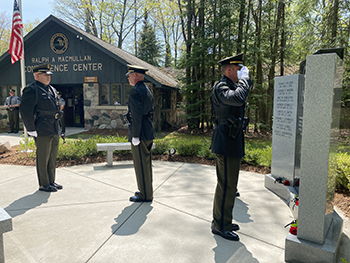
In 1962, President John F. Kennedy proclaimed May 15 as Peace Officers Memorial Day, and the coinciding week as National Police Week (May 12-18 this year).
The DNR honors and remembers 17 fallen conservation officers and their families. These officers gave their lives as the result of complications or injuries sustained while serving their communities.
Recognized for the first time this year is Sgt. Paul Durham, who died in 1972 while on patrol.
"The DNR honors 17 fallen conservation officers and their families,” said Lt. Jeremy Payne. “National Peace Officers Memorial Day is a reminder of those who paid the ultimate sacrifice to protect our natural resources and communities.”
Officers place State of Michigan flags during a small ceremony at the gravesite of each of the known fallen COs; the flags remain through the Memorial Day holiday weekend. Additionally, a fallen officers memorial was dedicated in 2022 as a place to permanently recognize each of the DNR’s officers. Watch this short video about the memorial dedication.
Previously referred to as game wardens, Michigan DNR conservation officers have a physically and mentally demanding careers that require a huge commitment from both the officers and their families.
Since 1887, advanced technology, equipment and training have contributed to the evolving responsibilities of conservation officers, who are now integral law enforcement partners aiding in search and rescue efforts and community safety and education.
|
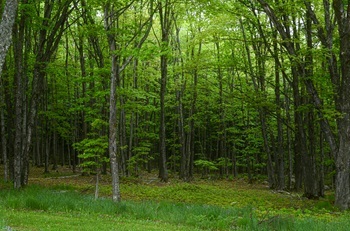
A series of open houses and meetings known as “compartment reviews” begins Thursday, May 16, and runs through fall as the DNR Forest Resources Division seeks input from the public on management activities scheduled for 2026.
Management activities in the state forest – which covers nearly 4 million acres in the northern Lower and Upper peninsulas – include such things as cutting and thinning trees, prescribed burning and planting new trees.
There are multiple ways to participate and make sure your voice is heard: Email your thoughts during a 30-day period prior to each open house, attend an open house, and attend compartment review meetings where final decisions are made.
The open houses start May 16 for the Crystal Falls and Baraga management units and run through the fall. Management units are Atlanta, Baraga, Cadillac, Crystal Falls, Escanaba, Gaylord, Gladwin, Grayling, Gwinn, Newberry, Pigeon River, Roscommon, Sault Ste. Marie, Shingleton and Traverse Cit.
|
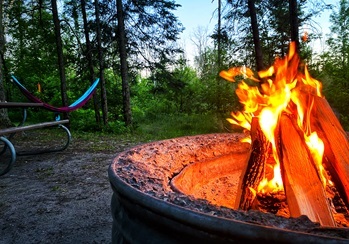
Moving firewood when you camp, hunt or head out for a weekend getaway means you risk carrying tree-killing insects and diseases to new places. Invasive pests can crawl out, infesting trees and carrying diseases that can forever change the landscape of the places you love.
According to the Michigan Department of Agriculture and Rural Development, there are 140 pests and diseases that can be moved with firewood. Some, like oak wilt, hemlock woolly adelgid and spotted lanternfly are already present in Michigan, while others such as Asian longhorned beetle are infesting nearby states.
“On their own, these insects and diseases can’t travel very far, but they can travel hundreds of miles on firewood,” said Joanne Foreman, Invasive Species Program communications coordinator with the DNR. “Trees cut for firewood often died due to insects or disease. Why risk carrying oak wilt to your cabin or beech bark disease to your favorite camping spot?”
Keep the fire burning
You can still have a roaring campfire or a cozy night in front of the fireplace – just make sure to burn safely:
-
Wood that looks clean and healthy can still have tiny insect eggs or microscopic fungi spores that can start a new and deadly infestation. Always leave your backyard firewood at home, even if you think it looks fine.
-
Buy firewood near where you will burn it – a good rule of thumb is only using wood that was cut within 50 miles of where you’ll have your fire.
-
Use FirewoodScout.org to find a firewood vendor near your destination. With over 350 Michigan listings, you can comparison shop before you arrive.
-
Certified, heat-treated firewood is safe to move long distances. Look for a federal stamp or seal on the package and keep the firewood in the original packaging if entering a campground that requires heat-treated wood.
-
Aged or seasoned wood is still not safe. Just because it is dry doesn’t mean it’s clean. A recent study showed insects continued to emerge from firewood even three years after it had been cut.
-
If you buy firewood and don’t burn it all, don’t bring it home or to your next destination.
-
Tell your friends not to bring wood with them – everyone needs to know they should not move firewood. You are the first line of defense against a new infestation.
Know before you go
Firewood policies vary greatly among national parks, national forests, private campgrounds and other lands in Michigan. Call ahead or visit DontMoveFirewood.org for more information.
In state parks, the DNR requests visitors purchase certified, heat-treated firewood sold in the parks or at some local stores and roadside stands.
Information on invasive tree pests and diseases of concern in Michigan can be found at Michigan.gov/Invasives.
|
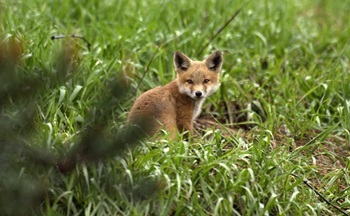
The newest episode of the DNR Wildlife Division's "Wildtalk" podcast is now available. The May show flits into focus with a discussion of the color-shifting indigo bunting, and burrows in on red foxes – and why you might soon catch a flash of that telltale coat.
DNR wildlife field operations manager Bill Scullon stops by to chat about efforts for wildlife above the bridge in the Upper Peninsula, and DNR wildlife biologist Pete Kailing also drops in with an overview of hunting and trapping opportunities available this month.
Award winner
Beyond the deep dive into Michigan’s wondrous wildlife, here’s another good reason to listen in: Government Social Media named “Wildtalk” as best podcast in its 2024 Golden Post Awards!
From the GSM website:
“The judges of this category chose Michigan DNR’s Wildtalk podcast as the winning entry because they put so much thought into their entry, showcasing the overall quality of the show and their commitment to their podcasting efforts overall. Their goals stood out as a beacon of excellence and they highlighted the steps they took to ensure the show is as inclusive and accessible as possible, beyond just providing transcripts.
|
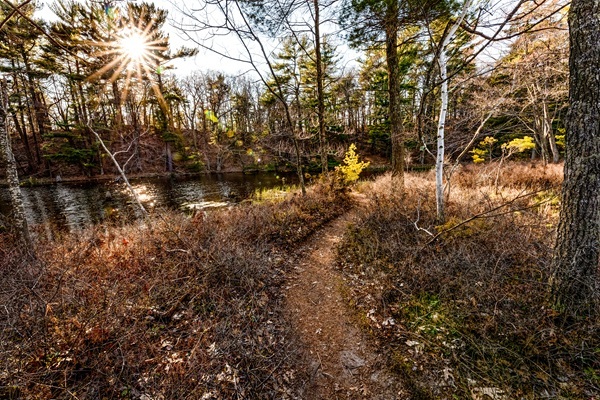 See more pictures by Michigan state parks photo ambassadors at Instagram.com/MiStateParks. For more on the program, call Stephanie Yancer at 989-274-6182. (This photo is by Aubry Healy, for the Michigan DNR, at Ludington State Park in Mason County.)
|